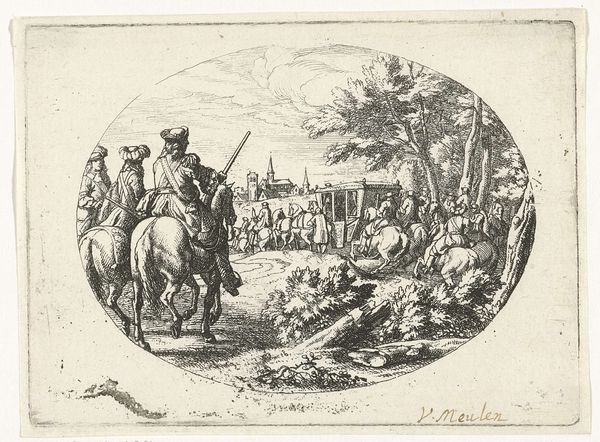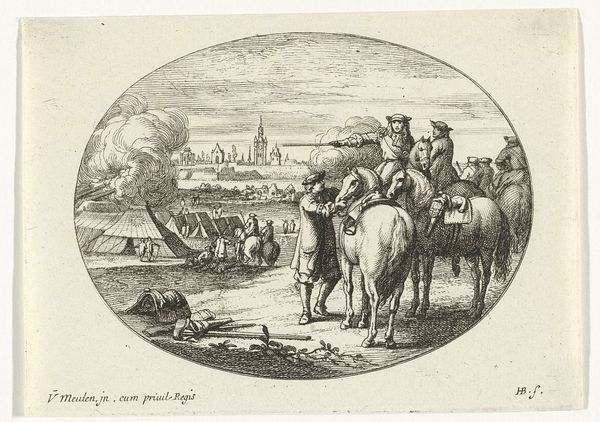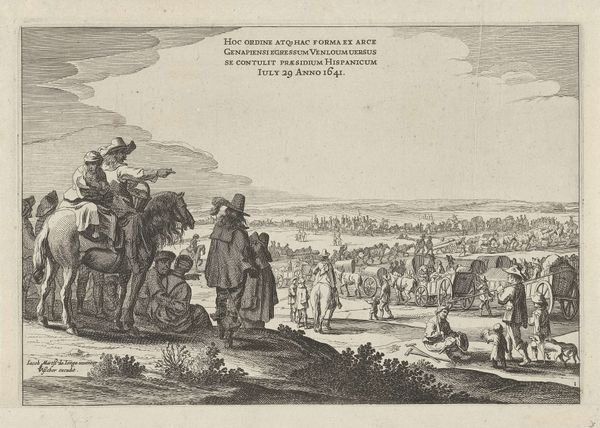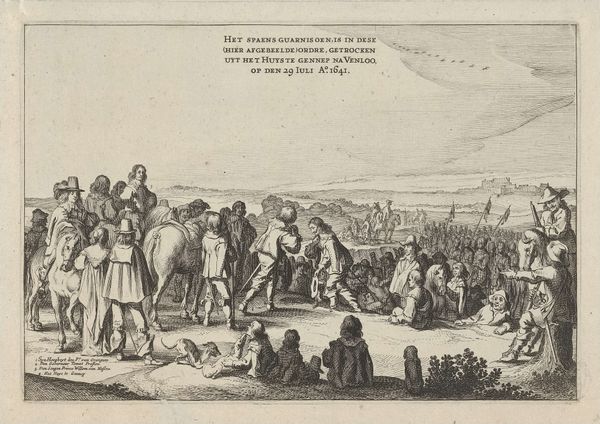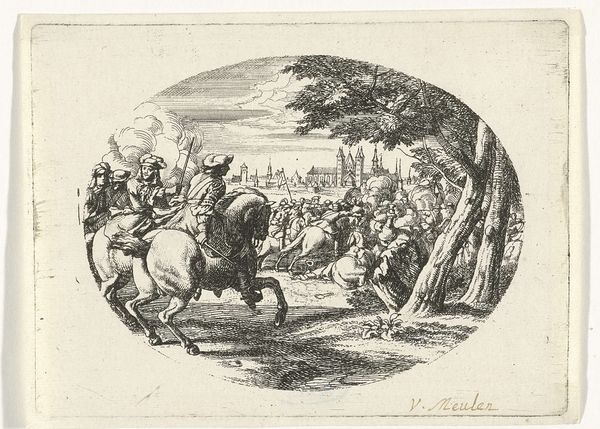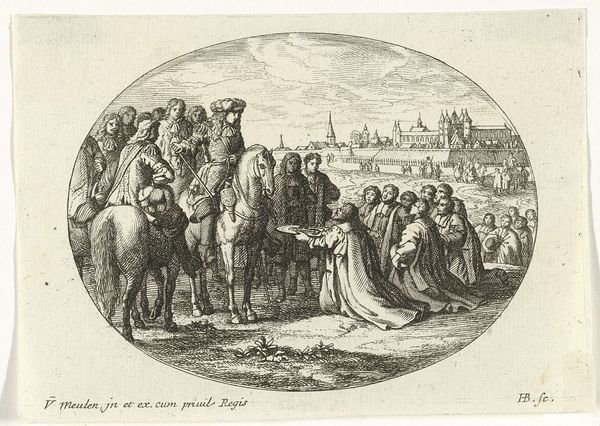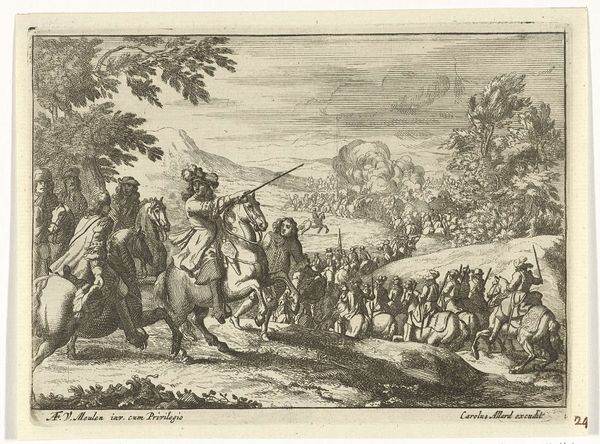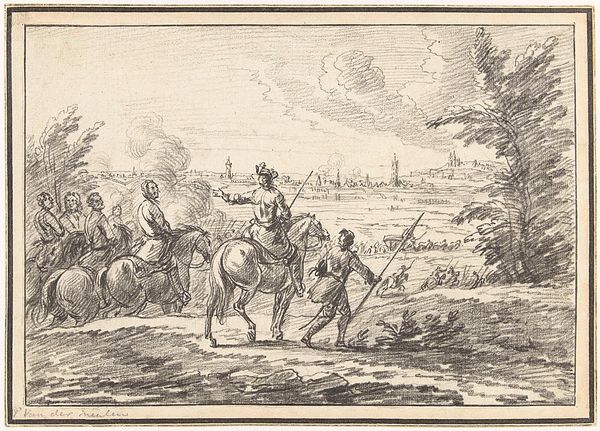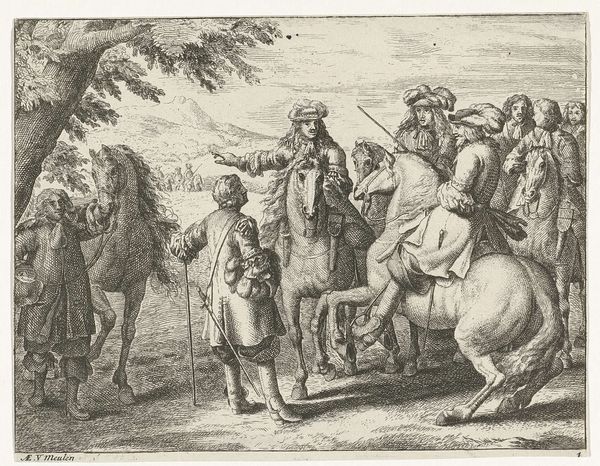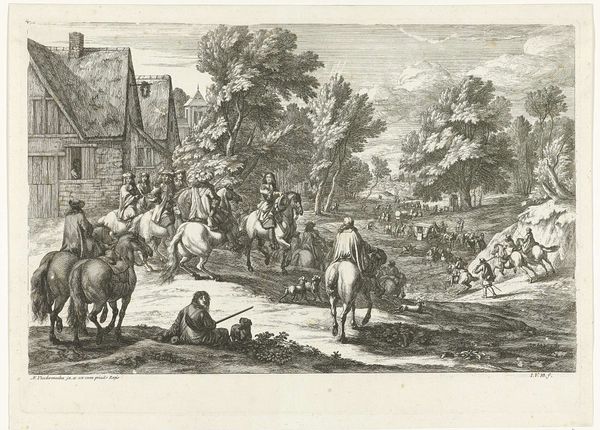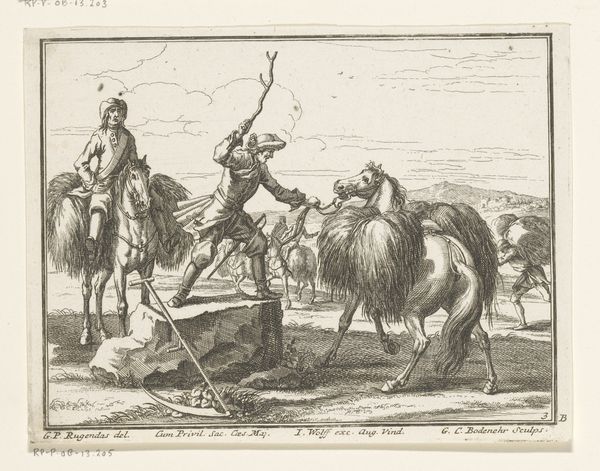
print, engraving
#
baroque
# print
#
landscape
#
genre-painting
#
history-painting
#
engraving
Dimensions: height 99 mm, width 139 mm
Copyright: Rijks Museum: Open Domain
Curator: Editor: Here we have Jan van Huchtenburg’s “Siege of a City,” an engraving dating somewhere between 1674 and 1733. The circular composition gives it a somewhat theatrical feel, like we’re peering through a spyglass. It feels like a very male-dominated world, full of military might, wealth and power. What sort of narrative do you see playing out here? Curator: That’s a perceptive reading. The military subject matter certainly emphasizes those masculine codes. What is really striking about this image is the explicit relationship between war and wealth. Do you notice the carriage being escorted? Consider what that represents during this era. Editor: It’s clearly someone of high status being protected…wealth, as you say, perhaps even royalty? Does that tell us anything more about who the artist, Huchtenburg, might have been trying to reach? Curator: Exactly! Consider who benefits from the spoils of war, and who bears the cost. The very format of a print, something reproducible and relatively accessible, suggests that Huchtenburg was aiming to circulate a particular message to a broader public. But what message was that, and to what end? Do you notice anything that seems off or particularly idealized? Editor: Hmm... there’s an orderliness to the chaos, even in the siege itself. It seems staged, less about the grit of battle and more about the glory, which almost serves to sanitize and therefore glorify violence. I can see how, by subtly obscuring the realities of conflict, art like this might reinforce existing power structures. Curator: Precisely. By understanding this image within its historical and social context, we can start to unravel its complex relationship to power, and see how art can both reflect and reinforce dominant ideologies. Editor: I never thought about landscape and war relating to the gender question before. Curator: It's essential that we don’t consider art history in isolation. This opens up avenues for interpreting beyond face value, making it far more engaging and applicable to contemporary thought!
Comments
No comments
Be the first to comment and join the conversation on the ultimate creative platform.
